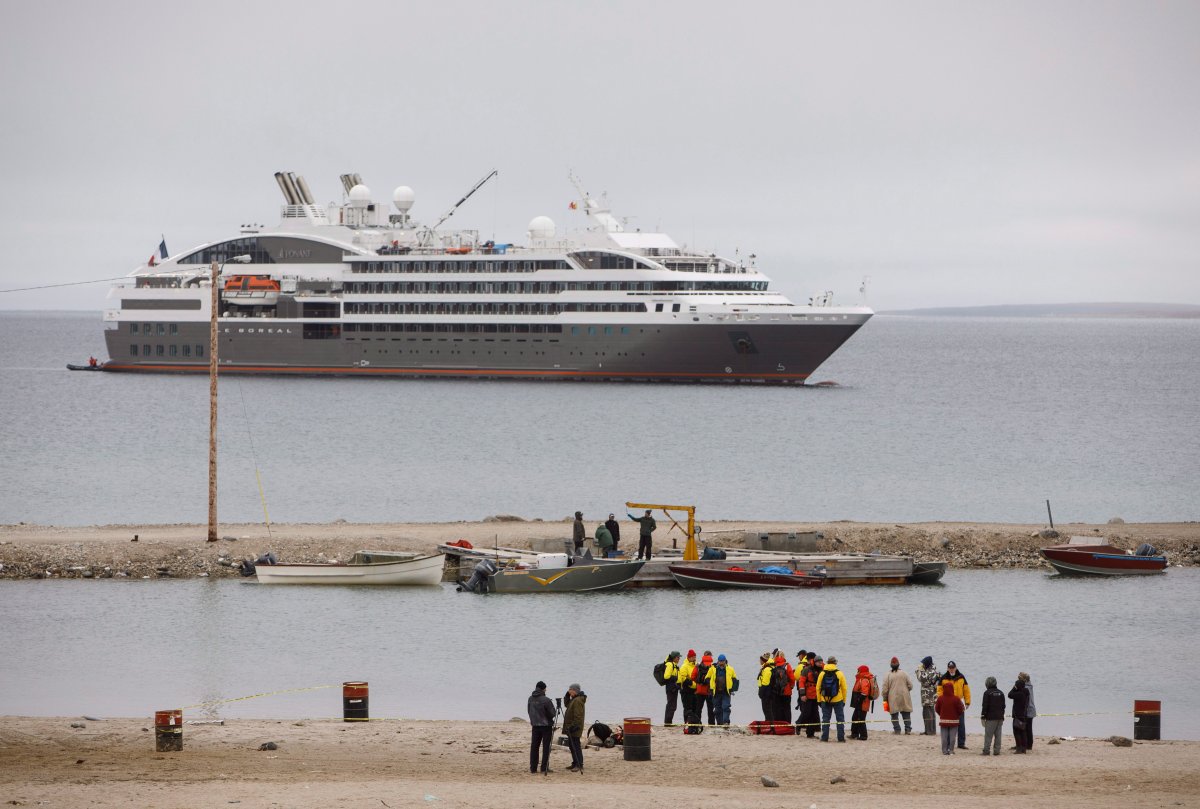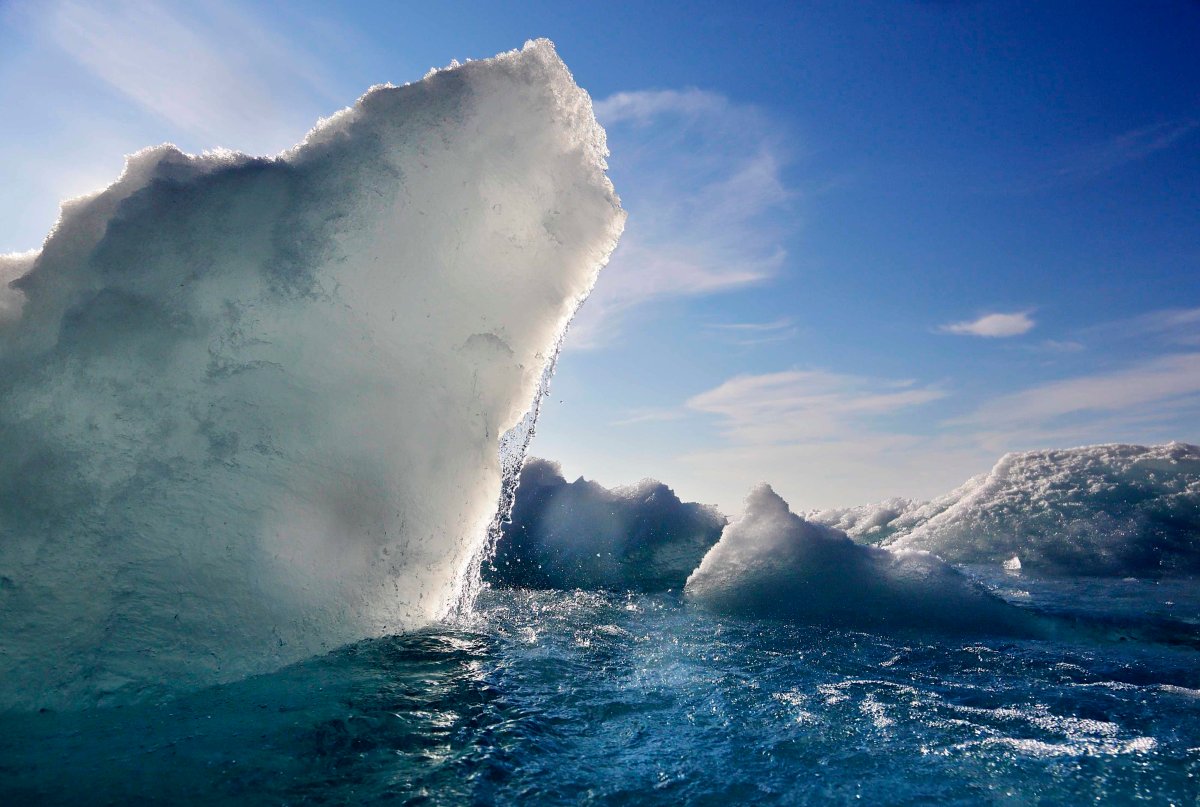Tourists say the darndest things. Just ask Anna Aaluq, who’s waiting on a pebbly beach to guide a group of cruise ship passengers around her hometown of Gjoa Haven, Nunavut.

“They ask if we still live in caribou-skin tents. They ask if we still live in the wooden cabins,” she says, pointing to the square homes that house nearly everyone in the town of 1,400 on King William Island along the Northwest Passage.
“They are surprised we have TV.”
But Aaluq, who’s paid for her services, is happy to see the visitors splashing onto the beach from the inflatable boat that has ferried them off Le Boreal, a French-flagged ship carrying 166 passengers.
“They’re interested in our community,” she says. “They ask what is this building or how do you use this type of tool, for example a komatik — a snow sled — how we pack it up with our grub if people want to go camping.
“Some are very nosy. They just want to take pictures. Some are very kind.”
Arctic cruise tourism has come a long way from its early days.
In the past, tourists would be dumped on shore and left to wander about in hamlets without even a coffee shop or public bathrooms. Inuit children would tag along, posing for pictures in exchange for handouts.
Now, cruise ships warn communities well in advance of a planned visit. In Gjoa Haven, the tour companies pay the town $50 a head.
READ MORE: Controversial Arctic cruise through Northwest Passage arrives in NYC
Passengers arrive in manageable groups. Local guides show them the sights and answer questions. Tourists get a cultural program, as well as a chance to buy art and crafts, and often a meal of country food.
The Nunavut government has passed new regulations for cruise ships that are expected to be in effect for next year.
Cruise operators could be required to file economic benefit reports, to limit the number of passengers disembarking at any one time, to notify communities within a certain time if a ship’s schedule changed and to distribute visitor guidelines to passengers.
Cruise ship tourism can pose safety and environmental concerns.
Arctic seas remain poorly charted. In 2012, a 200-passenger ship ran aground in the passage, although the weather was calm. Everyone was helped off safely.
While Canadian regulations already forbid discharging oil, oily waste, or any kind of garbage into Canadian Arctic waters, some marine fuels emit particles that darken sea ice and snow, hastening their melt.
READ MORE: Arctic ice melt hastening, could cost world economy trillions
Still, Aaluq’s visitors seem to be enjoying themselves.
“We’re just fascinated,” says Heidi Canarelli of Las Vegas.
“The people are just so nice, and the thought that they can live in this environment year round is overwhelming.”
“What I’ve noticed the most is the amount of pride in their traditional way of life,” says Charlotte Howard of Colorado Springs, Colo. “That mixture you get between development and what we would call the modern world.”
Numbers are down slightly since 2014, when almost 2,900 passengers sailed the Northwest Passage. Still, more than 2,600 visitors were scheduled in both 2016 and 2017, with 13 communities and 11 ships on this year’s itinerary.
Pleasure craft bring more people. In 2014, there were 30 of them with another 240 people aboard.
The most recent figures, from 2011, suggest tourism left about $40 million in Nunavut’s economy.
“Average spending has been low in the past off the cruise ships,” says Bob Cheetham, Gjoa Haven’s economic development officer.
“But a lot of that’s about how we haven’t had the promotional stuff on the cruise ships in advance to prepare them for what they might be able to purchase here. That’s changing.”
These passengers have money, says Cheetham.
“The cruises are not cheap. They’re typically people who are 50 and above. They’re people who have travelled the world and know what it’s about — most of them with very expensive cameras.”
It’s worth the money for Harriet Litt of Seattle.
“The landscapes are fabulous. Every day the light is different,” she says.
“I’ve always been fascinated with this part of the world and it’s kind of fun to come to a place where a lot of people don’t know about and don’t come.”
READ MORE: Annual report card rings the alarm on rising temperatures, melting ice in Arctic
They’re welcome, says Aaluq.
“People don’t mind. They know who the tourists are because they’re dressed all in one colour and they walk in groups and they always have a camera out.
“They’ll be welcoming and say hello or give them a smile. The community’s figuring it out.”









Comments